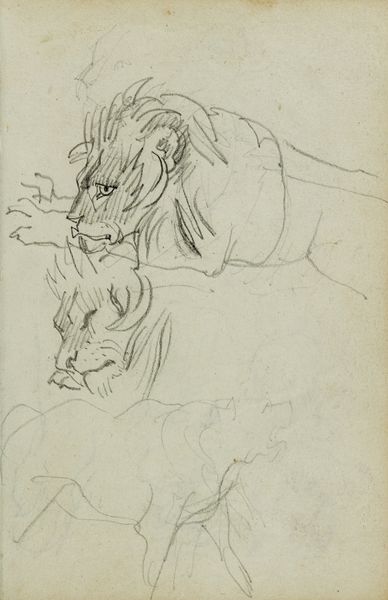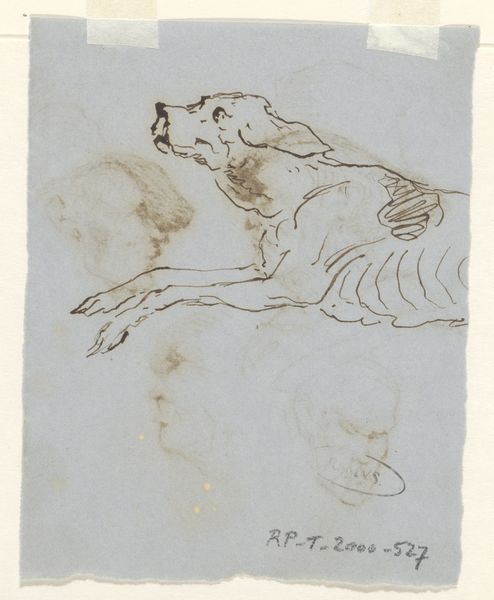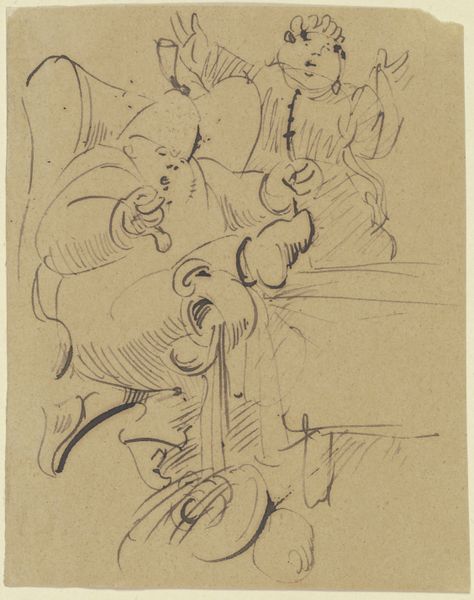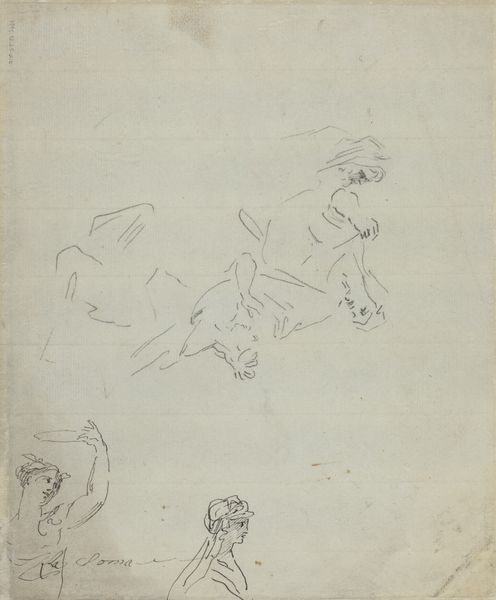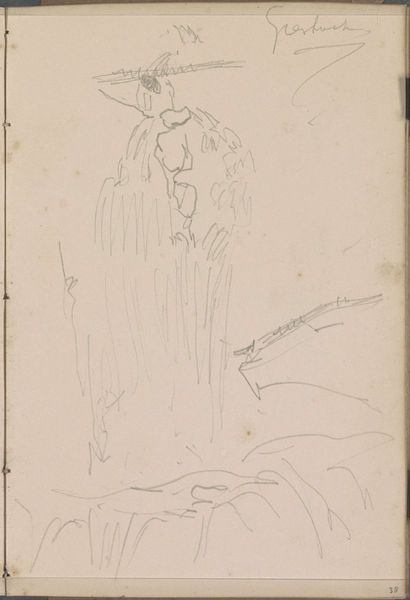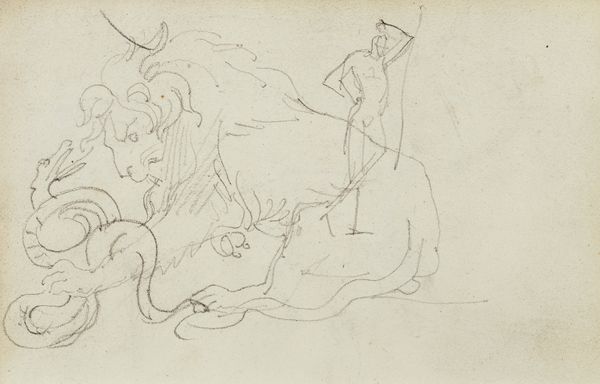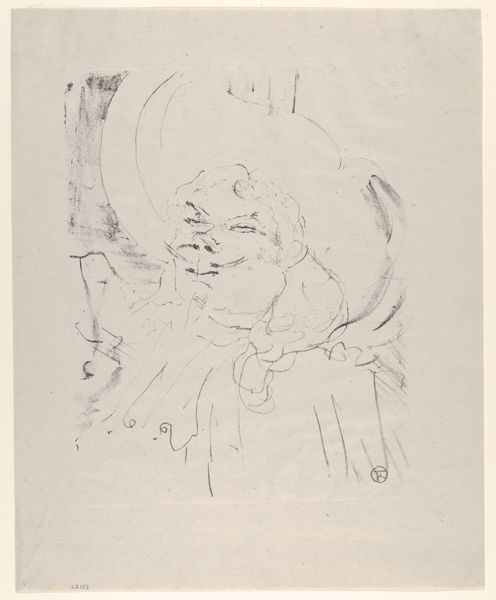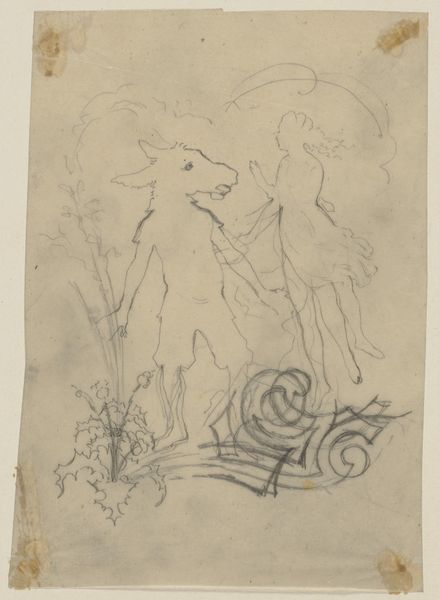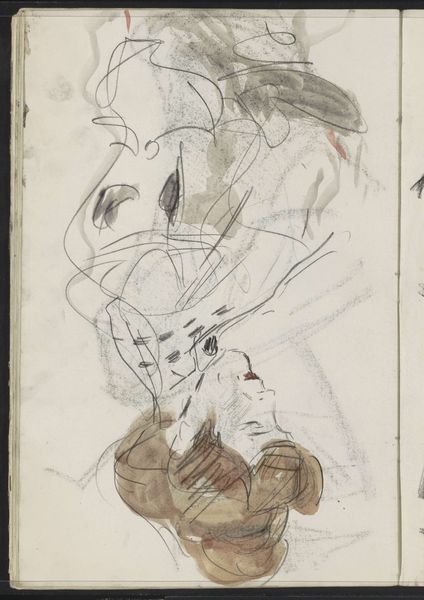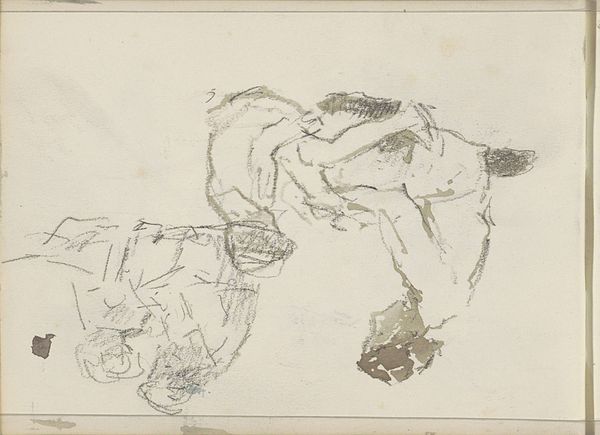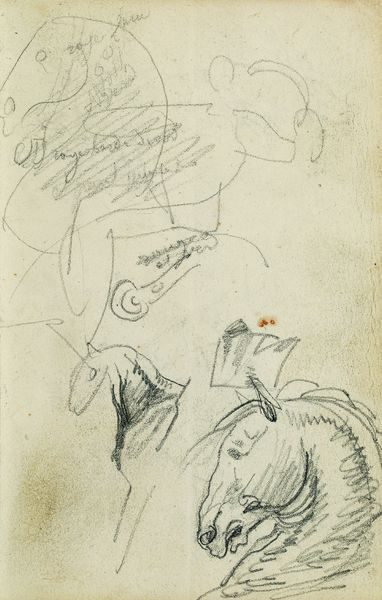
Caricature of four bestial heads in profile 1769 - 1772
0:00
0:00
drawing, ink
#
portrait
#
drawing
#
caricature
#
figuration
#
ink
#
line
Dimensions: 196 mm (height) x 140 mm (width) (bladmaal)
Editor: Here we have John Hamilton Mortimer’s "Caricature of four bestial heads in profile," created with ink on paper between 1769 and 1772. The figures have quite grotesque, animalistic features. What kind of symbolism do you see in the exaggerated features and the row of figures? Curator: Consider how caricatures function, Editor. They seize on already existing perceived flaws and amplify them. What animal, or perhaps demonic, features do you notice repeated across these four profiles? Consider how these symbolic choices relate to a historical understanding of morality and physical appearance. Editor: I see prominent snouts, heavy brows, almost claw-like hands…like maybe boars and wolves. Does that imply a commentary on greed or predatory behavior? Curator: Precisely! These repeated, intensified animalistic traits create a visual language – almost a bestiary. But instead of simple labels, Mortimer layers societal anxieties and power dynamics onto these exaggerated forms. It’s a powerful commentary on corruption, using familiar, visually understood archetypes of vice. Do you see any differences between the figures? Editor: I think the one on the far right appears more human. It has that single strand of hair and… it looks sad. Curator: Yes! That is something that I see in this image also. The single strand of hair, a symbolic link between man and animal and something forlorn about its drooped expression. Mortimer doesn’t present simple monsters but reveals a disturbing and fascinating picture of society through layered iconography. Editor: That's really insightful! I hadn't considered how it reflects societal anxieties so directly. Curator: This is about continuity of meaning. Mortimer taps into a pre-existing cultural vocabulary to make a pointed statement that resonates even today, inviting us to question the beast within.
Comments
No comments
Be the first to comment and join the conversation on the ultimate creative platform.
